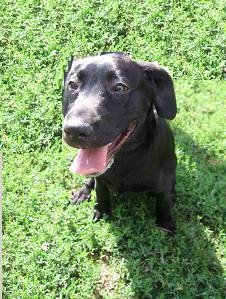Чип / Chip / Puce
-
В събота Глори се сдоби с идентификационен чип. За протокола ще споменем, че съществува поставяне и на друг вид маркировка – татуировка. Ветеринарят инжектира въпросния чип на врата на Глори, на четири пръста зад лявото ухо, където той се капсулира. Процедурата беше бърза и видимо безболезнена. Според европейските стандарти тези микрочипове са задължителни за всички домашни кучета. Стикер с номера на чипа, който е съвсем мъничък и не се напипва с ръка, се залепва във ветеринарния паспорт. След прочитане със специален четец, тази идентификация удостоверява, че кучето е същото от ветеринарния паспорт, със съответните ваксини. Ако кучето се загуби и някой го намери, именно благодарение на чипа ще може да се докаже, че това е търсеното куче. В някои страни съществува и база данни на очипените кучета. Така, ако някое изгубено куче попадне в приют или ветеринарна клиника, много бързо ще бъдат открити собствениците му.
-
On Saturday Glory acquired an identification chip. For the record we’ll mention that there exists an alternative way of marking – the tattooing. The veterinary injected the transponder in question on Glory’s neck, at about four fingers at the rear of her left ear, where it will enclose in capsule. The procedure was apparently quick and painless. According to the EU standards these microchips are obligatory for all dogs kept at home. The sticker indicating the number of the chip, which is quite tiny and non-palpable, is clinged to the veterinary passport. After detecting it with a special reader, this identification attests that the dog is the same as the dog in the passport, which got immunized with the relevant vaccines. If the dog gets lost and someone find it, actually thanks to the chip one could prove that this is the searched dog. In some countries there is a data base of the chipped dogs. Thereby if a lost dog gets into a shelter or into a vet clinic one could easily trace back its owners.
-
Samedi Glory a obtenu une puce d’identification. Pour mémoire, on va mentionner qu’il existe un marquage alternatif – celui du tatouage. Le vétérinaire a injecté le transpondeur en question au cou de Glory, à quatre doigts de distance, en arrière de l'oreille gauche où il va se capsuler. La procédure semblait brève et apparemment sans peine. Selon les standards de l’UE ces puces sont obligatoires pour tous les chiens compagnons. Un autocollant, portant le numéro du transpondeur, qui est tout à fait menu et impalpable, est joint dans le passeport vétérinaire. Après avoir passé un lecteur spécial (qui permet de la lire à travers la peau), cette identification atteste que c’est le même chien que le chien du passeport, qui a été piqué des vaccines pertinentes. Si le chien se perd et quelqu’un le récupère, c’est notamment grâce à cette puce qu l’on peut prouver que c’est le chien cherché. Dans certains pays il existe une base de données des chiens marqués. Ainsi si un chien perdu tombe dans un refuge ou dans une clinique vétérinaire on pourra très facilement repérer ses propriétaires.





0 Comments:
Post a Comment
<< Home